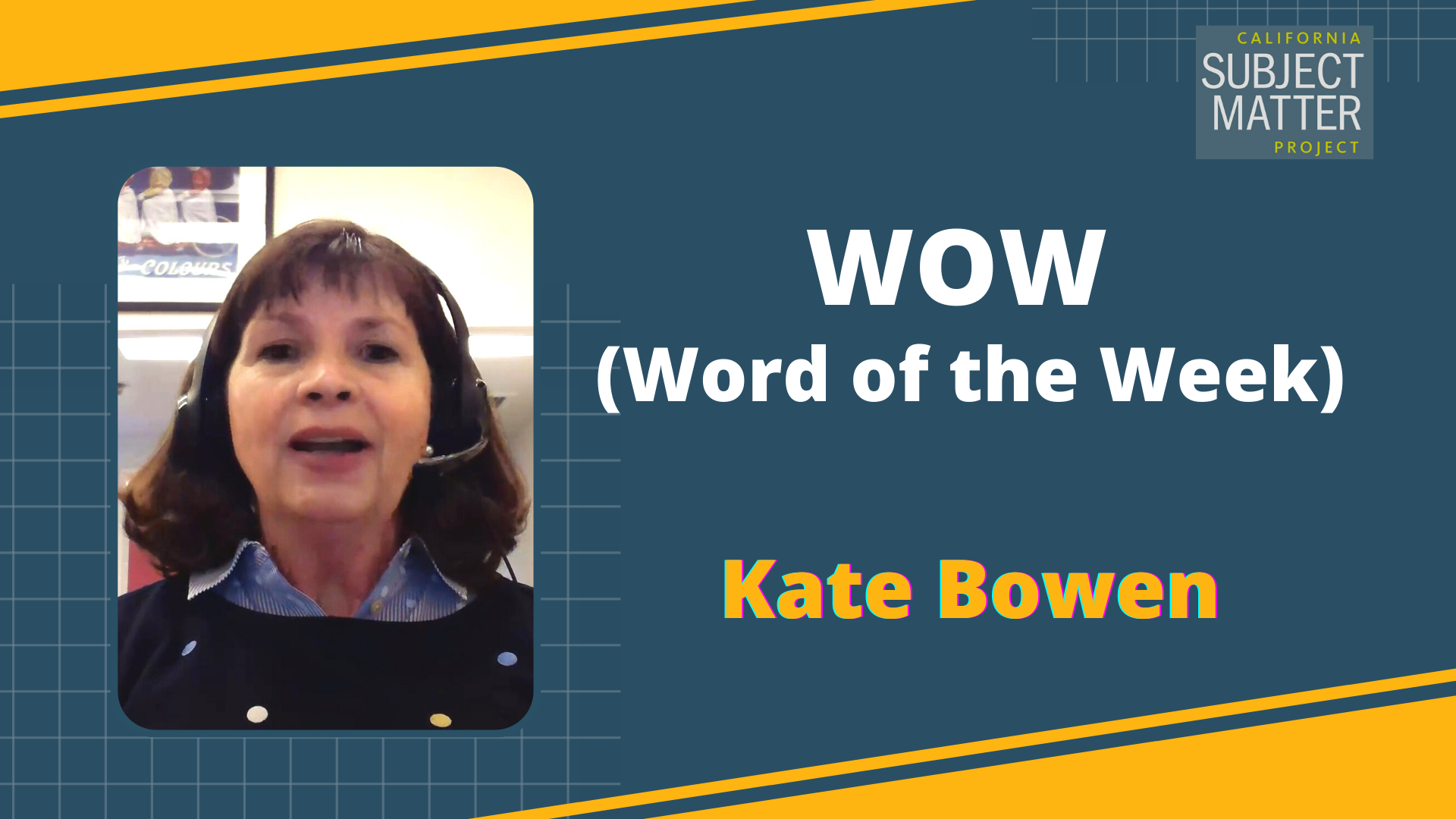Watch the Video
Presenter
Martha Garcia Gallaga, teacher leader in transformational coach with California Reading and Literature Project and also teaching English transitional kindergarten class at Las Palmas Element.
Transcript
Hi, my name is Martha Garcia Gallaga, and I’m a teacher leader and a transformational coach with the California Reading and Literature Project. Currently, I am teaching an English transitional kinder class at Las Palmas Elementary. Have you ever wondered what to do after a read aloud with your primary students? Today I will be sharing with you a simple comprehension strategy to organize their thoughts in a sequential order and to retain information later on to help them to summarize. This strategy is for fiction stories only in grades transitional kinder, kinder, and first grade.
To get the students started, you will want to create a simple beginning, middle and end chart. I tell them, “today we are going to read a fantastic story about my red balloon. Take a look at this chart. I want you to focus and use your listening ears. Now we will read the book after we will play a fun game called beginning, middle and end”. Charting will help students retain information about characters, setting problems, and solutions to later assist when talking about events in the story.
After reading the book, you can call on the students to add to the beginning, middle and end chart. Once the chart is complete, have the students partner up to retell the events in the story. After each partner has shared, students can independently create their chart. Provide a piece of paper for the students to either write or draw the beginning, middle and end of the story.
If you find your students having difficulty identifying the middle of the story, there are two things you can do. First, you can chart what happened in the beginning of the story, skip what happened in the middle, and then chart what happened at the end. This makes it easier for students to recall events in the middle of the story.
Another tip to help a students recognize the middle of the story is to refer to the images in the story in order to prompt a student’s memory. This is a great opportunity to share. Good readers often refer back to the book as a resource to find events and details. It’s a great way to support non-readers and English language learners.
As students become more comfortable, instead of starting with a whole group first students can start with talking to a partner. Be sure to start one component at a time. Once partners have both shared, then ask for their partner to share the answer or paraphrase. Record this information on the chart.
One way to ensure everyone is included is to record students names next to the responses. To randomly choose students, I began using the spinner wheel. That’s a wheel of names that you can find on the web. I found that this resource fun and engaging for my little ones. When creating the chart, things to think about are color coding and sentence frames. Using sentence frames can be useful for students to ask and answer questions.
To recap: review the book before reading with the students; create a color coded beginning, middle, and end chart; remind the students to listen carefully as they will share after we have read the book; record the events on the chart; and have students practice retelling the story to one another. This simple strategy leads itself to help students to organize their thoughts in a sequential order, resulting in helping them to retain information. I hope this strategy is as helpful and you enjoy doing it this with your students as I did enjoy developing this for you. Thank you very much.



